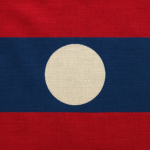
In the rich tapestry of fashion history, the skirt emerges as an enduring and versatile garment, weaving through centuries and cultures. From the draped elegance of ancient civilizations to the bold statements of the modern runway, the skirt has been a canvas for cultural expression, individual style, and societal shifts. This exploration delves into 25 historical facts and numerical trivia, unveiling the evolution of the skirt’s silhouette, the influence of fashion icons, and its symbolic resonance. Join us on a journey through time and style, where the threads of innovation, cultural influences, and sustainability weave together, creating a narrative as diverse and dynamic as the skirts that have graced runways, streets, and iconic moments in history.
History of Skirt:
Ancient Origins: Skirts trace their roots back to ancient civilizations, marking a fascinating evolution in fashion. In ancient Egypt, Mesopotamia, and Greece, both men and women adorned draped garments resembling skirts. These early garments were practical, offering comfort and ease of movement, while also reflecting cultural and societal norms of the time.
Mesopotamian Influence: Around 3,000 BCE in Mesopotamia, the “kaunakes,” a woolen skirt-like garment, exemplified the early innovation in skirt fashion. Worn by both genders, this early form of a skirt demonstrated the adaptability of clothing to diverse climates and cultures, showcasing the functional aspect of fashion in ancient societies.
Greek Peplos: Ancient Greece brought forth the iconic “peplos,” a draped garment or tunic that can be considered an early version of the skirt. Worn by women, the peplos was a rectangular piece of fabric fastened at the shoulders and cinched at the waist, contributing to the classical elegance that defined Greek fashion.
Roman Togas: In the ancient Roman world, togas draped over the body, resembling a form of skirt worn by men. The toga, with its distinctive one-shoulder design, showcased the adaptability of skirt-like elements across different cultures and time periods, contributing to the rich tapestry of historical fashion.
Medieval Tunics: During the medieval period in Europe, both men and women embraced skirts as integral components of their attire. Tunics, characterized by their skirt-like lower portions, symbolized the fusion of practicality and aesthetics, reflecting the societal norms and fashion sensibilities of the medieval era.
Renaissance Fashion: The Renaissance era witnessed a transformative period in skirt fashion. Skirts became fuller, and women’s fashion embraced hoop skirts and petticoats to create a voluminous silhouette. This marked a departure from the austere styles of the preceding medieval period, showcasing the dynamic nature of fashion evolution.
Victorian Era Hoopskirts: Hoopskirts, a defining feature of Victorian fashion, exemplified the dramatic evolution of skirts in the 19th century. These structured underskirts, which created a bell-shaped silhouette, became emblematic of the Victorian era’s fashion extravagance, symbolizing the intersection of societal norms and evolving tastes.
Flapper Dresses: The 1920s ushered in the flapper era, where women’s fashion rebelled against conventional norms. Shorter skirts became emblematic of the flapper style, reflecting a liberated and modern lifestyle. This marked a significant departure from the longer, restrictive skirts of the previous decades, symbolizing a cultural shift.
Christian Dior’s New Look: Post-World War II, Christian Dior’s “New Look” revolutionized fashion with its emphasis on a small waist and a full, voluminous skirt. Introduced in 1947, this style was a stark departure from the wartime austerity, symbolizing a renewed focus on opulence and femininity in post-war society.
Mini Skirt Revolution: The swinging 1960s brought about a seismic shift in fashion with the introduction of the mini skirt. British designer Mary Quant’s innovative design captured the spirit of youth and liberation, challenging traditional hemline conventions and leaving an indelible mark on the fashion landscape. The mini skirt became a symbol of the cultural revolution and changing societal attitudes towards women’s clothing.
Average Skirt Lengths: The average length of skirts has been a dynamic aspect of fashion, responding to changing trends and societal norms. In the 21st century, skirt lengths vary widely, offering options from mini to midi to maxi. This diversity caters to individual preferences, occasions, and cultural influences. The evolving hemlines reflect the continuous dialogue between fashion designers, consumer preferences, and broader cultural shifts, highlighting the fluid nature of style.
Fashion Icons: Throughout history, fashion icons have played pivotal roles in shaping and popularizing skirt trends. Visionaries like Coco Chanel have left enduring legacies in the world of fashion, influencing not only the design of skirts but also challenging traditional gender norms. These influential figures act as trailblazers, guiding the trajectory of fashion evolution and inspiring generations to come.
Weight of Fabrics: The weight of fabrics used in skirts contributes to their drape, movement, and overall aesthetic. From lightweight fabrics like chiffon and silk, providing an airy and graceful feel, to heavier materials like wool or denim, offering structure and warmth, the choice of fabric influences both the comfort and style of skirts. Designers often experiment with a variety of textiles to achieve the desired look and functionality.
Height of Hemlines: The height of hemlines has been a subject of fascination and cultural significance. Over the years, skirt lengths have fluctuated, responding to societal norms and fashion trends. The “midi” skirt, falling below the knee and above the ankle, gained popularity in recent years, offering a balanced alternative to the extremes of mini and maxi lengths. Hemline variations continue to reflect the ever-changing landscape of fashion.
Fashion Weeks: Skirts take center stage during globally renowned fashion weeks, where designers unveil their latest creations. From the runways of New York to Paris, fashion weeks showcase innovative skirt designs, setting the tone for upcoming trends. These events not only celebrate the artistry of designers but also shape the collective imagination of the fashion-conscious.
Cultural Influences: Skirt styles often draw inspiration from diverse cultural influences. For instance, the traditional Scottish kilt, a type of pleated skirt worn by men, holds cultural significance and reflects a rich heritage. The fusion of cultural elements in skirt design adds depth and diversity to the global fashion landscape, emphasizing the interconnectedness of style and cultural identity.
Skirt Suit Evolution: The skirt suit, a symbol of professionalism for women, has undergone significant evolution. Influential designers like Coco Chanel and Yves Saint Laurent have made groundbreaking contributions to the modern interpretation of the skirt suit. This ensemble has transcended its utilitarian origins, becoming a powerful statement of women’s empowerment in various professional settings.
Celebrity Fashion: Celebrities wield considerable influence in shaping skirt trends, with iconic moments leaving a lasting impact on popular culture. Marilyn Monroe’s iconic white dress in “The Seven Year Itch” is an exemplar of a skirt moment that has transcended time, becoming an enduring symbol of glamour and femininity.
Textile Revolution: Advances in textile technology have revolutionized skirt design. The introduction of synthetic fabrics like nylon and polyester has expanded the possibilities for comfort, durability, and design. The textile revolution has not only impacted the aesthetics of skirts but also contributed to sustainability efforts as the industry explores eco-friendly alternatives.
Elastic Waistbands: The incorporation of elastic waistbands in skirts represents a practical and comfortable innovation. This design element has become popular in casual and athleisure skirts, providing flexibility and ease of wear. Elastic waistbands demonstrate how fashion can seamlessly merge style and comfort, catering to the dynamic needs of modern lifestyles.
Skirt Length Records: The fascination with skirts has led to the establishment of skirt-related records in the Guinness World Records. Categories such as the longest skirt and the largest gathering of people wearing tutus showcase the global enthusiasm for this garment. These records not only celebrate the diversity of skirt styles but also highlight the universal appeal of skirts as a fashion statement and cultural symbol.
Sustainable Skirt Fashion: The 21st century has witnessed a growing emphasis on sustainability in the fashion industry, and skirts are no exception. Designers and consumers are increasingly interested in eco-friendly materials, ethical production methods, and circular fashion practices. Sustainable skirt fashion reflects a commitment to environmental stewardship and the recognition of fashion’s role in promoting responsible consumer choices.
Online Retail Impact: The rise of online retail has transformed the way people shop for skirts. Online platforms provide a vast array of options, allowing consumers to explore global fashion trends from the comfort of their homes. The accessibility and convenience of online shopping have democratized fashion, enabling individuals to express their style preferences and experiment with diverse skirt designs.
DIY Skirt Trends: The popularity of do-it-yourself (DIY) fashion has given rise to skirt customization. Individuals often engage in creative projects, upcycling old clothing or adding personal touches to skirts. DIY skirt trends celebrate individuality, self-expression, and a sense of empowerment, emphasizing that fashion is not solely dictated by industry trends but can be a personal and creative endeavor.
Skirt Length and Body Positivity: In recent years, there has been a significant shift in the fashion industry toward promoting body positivity. Skirt designs now celebrate diverse body shapes and sizes, challenging traditional beauty standards. Inclusivity in sizing and representations of various body types in skirt campaigns contribute to a more inclusive and empowering narrative, reflecting the changing ethos of the fashion world.









